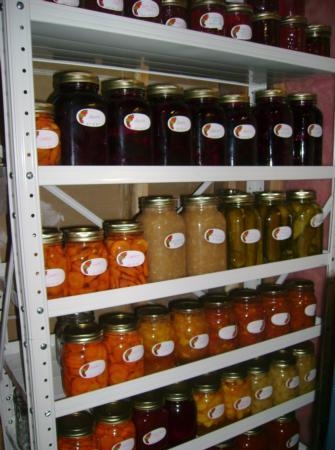UC Blogs
Full-Service Nurseries
This week, another full-service nursery closed its doors. Capitol Nursery announced that the Freeport Boulevard store in Sacramento would be closing. Why you ask, is that a problem when you can buy plants practically at every store in town? Full-serve nurseries are getting harder and harder to find. Yes, a person can go to a big “box store” and purchase plants with no problems – or so some of us think.
I laugh when I talk about going to H*D* to look for a plant! I laugh because I joke I can buy what I need there as long as it’s a petunia and I want it in any color. Folks like me don’t want what everyone else is growing; I want color and texture that is different from my neighbors. I guess what I mean is that although my next-door neighbor loves palm trees and has roughly 10 in his yard, I don’t want one. Why buy a plain old run-of-the-mill Boston fern (Nephrolepis exaltata) when for the price of shipping I can buy Nephrolepis exaltata ‘Suzi Wong’. Look at the two and there’s no other choice: the bright green foliage hanging straight down to length of 2 feet and the minute, mini leaves looking as though made of lace. The foliage looks almost fake – you know the plant is of man-made silk.
Growing plants that are a little different has become my hobby. I go to various nurseries when I visit friends and relatives back East just to find out what’s available elsewhere. I’ve found through my readings and “field trips” that some plants are horrible pests – on no plant lists –but here in California, we plant them with great abandonment. One such plant is the ‘Butterfly bush’ ( Buddleja spp.) which Fine Gardening Magazine practically insists is taking over the world.
Would I get this information at a “box store”? Nope! As a matter of fact when I tried several years ago to purchase nine Berberis verruclosa or Warty Barberry at my local box store, I was told “nope, won’t grow
here as they grew in zone 9 and that wasn’t Fairfield’s zone.” I had to remind the clerk that yes, there would be no leaves on the plants (it was winter after all), but I also had to explain the difference between the Sunset Western Garden Zones and those of the USDA. That was the second clerk as the first clerk I went to then promptly looked at his watch and advised he was going home! I ended up purchasing from the great nursery in American Canyon!
Any way, remember to buy from our full-service nurseries, principally local but don’t be afraid to venture afar for plants especially house plants. You get grade-A plants and the advice that can be the difference between success and failure!
The Great Bee Count
Are you ready for the Great Bee Count? It's happening Saturday, Aug. 11. You're encouraged to be a "citizen scientist" and count the bees in...
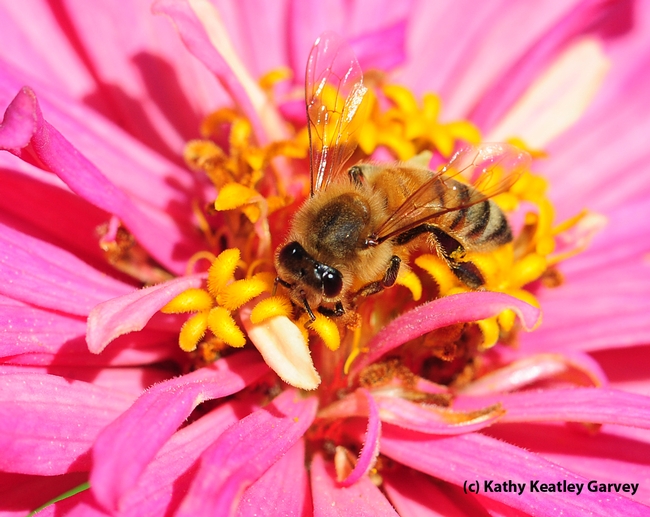
Honey bee nectaring in the Haagen-Dazs Honey Bee Haven at UC Davis. (Photo by Kathy Keatley Garvey)
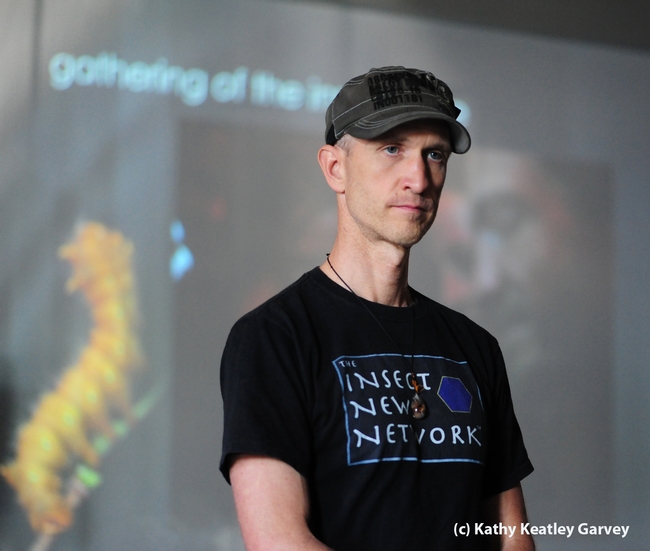
Emmet Brady is an innovator in the field of cultural entomology. (Photo by Kathy Keatley Garvey)
Master Food Preservers demonstrate canning at LA fair
Master Food Preservers of Los Angeles County UC Cooperative Extension will demonstrate food canning techniques at the LA County Fair in September, according to a blog on LA List.
With annual fairs getting plenty of publicity for their outrageous unhealthful food concoctions - think deep fried cereal, Twinkies and Oreos - instructions for converting summer's bounty of fresh fruits and vegetables to healthful winter staples is "a welcome addition," writes the author.
During the fair's run, visitors will learn how to make jams and jellies, the art of pickling and fermenting and how to preserve tomatoes. In addition to the demos, Master Food Preservers will take questions and offer food safety tips.
Glow in the Dark White Garden
It’s a pleasure to look out my upstairs bedroom window on dark summer nights. I look down on two beautiful white rose bushes growing in my neighbor’s garden across the street. Any time there’s a moon they become luminous. They truly glow in the dark!
Anyone who has access to the UCD Arboretum on a moonlit summer night can share my neighborhood experience on a much larger scale. A walk through the “ Carolee Shields White Garden” near the west end of the arboretum is a magical experience, made more so when there’s a full moon. Designed in the style of a Japanese Moon Garden it’s also the location of a lovely gazebo, popular for weddings.
White flowers of many varieties bloom in all seasons. They’re beautiful in the daylight too, of course, but moonlight sets the White Garden apart from all the other themed Arboretum landscapes. Its ethereal loveliness is worth the trip to the UCD campus.
It’s a bit of a walk out there, depending on where you leave your car, and somewhat remote from main campus areas. A flashlight and a companion are necessities, and selecting a night when the moon is expected to be especially bright is a plus!
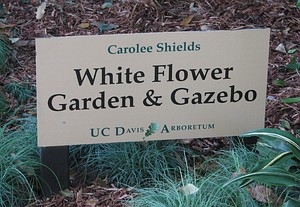
UC Davis Arboretum White Flower Garden sign. (photo by Marime Burton)
Cross Pollination of Ideas
Bee creative! That's what scientists at the University of California, Davis; area artists; and the general public will "bee" during the Davis...
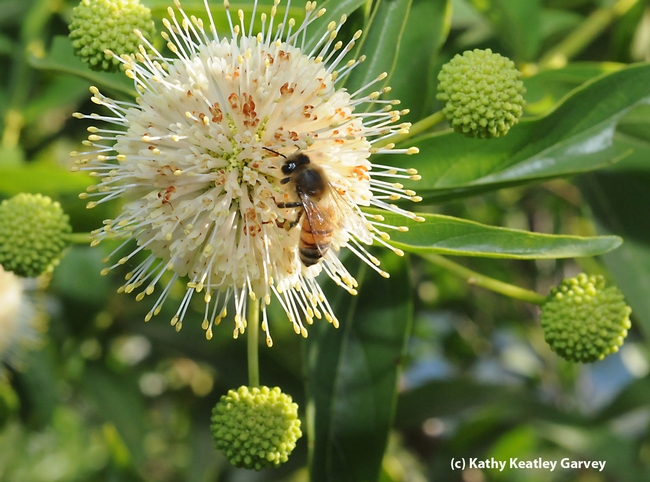
Honey bee foraging on a button willow, also known as a button bush (Cephalanthus occidentalis). (Photo by Kathy Keatley Garvey)


